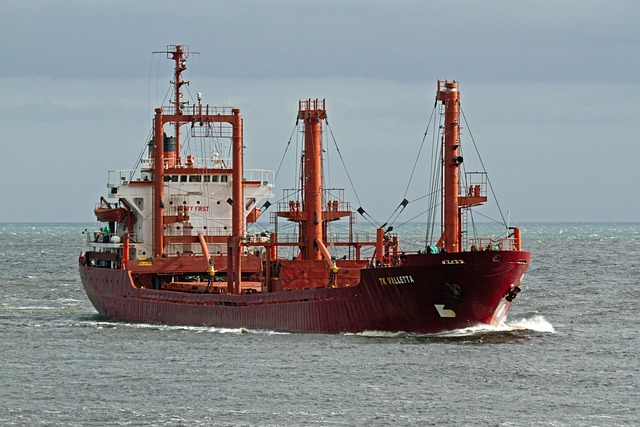Comprehensive Guide: Essential Checks Before Acquiring a Used Fishing Boat in 2025
Acquiring a used fishing boat can be an economical way to get out on the water and enjoy angling. However, unlike buying a new boat, purchasing used requires careful inspection and consideration to avoid costly repairs and ensure your safety. In 2025, with advancements in marine technology and increasing awareness of environmental regulations, the stakes are higher than ever. This comprehensive guide will walk you through the essential checks and considerations to make before you commit to buying a used fishing boat, helping you make an informed decision and enjoy years of smooth sailing and successful fishing.

Assessing the Hull: The Foundation of Your Boat
The hull serves as the structural backbone of any fishing vessel, making its condition paramount to both safety and performance. Begin your inspection by examining the exterior hull for signs of damage, including cracks, gouges, or soft spots that might indicate structural compromise. Pay particular attention to areas around through-hull fittings, the waterline, and the transom, where stress concentrations commonly occur.
Check for osmotic blistering, commonly known as “boat pox,” which appears as small bubbles in the gelcoat surface. While minor blistering may be cosmetic, extensive damage can signal moisture intrusion into the fiberglass layup. Run your hands along the hull surface to detect any irregularities, and use a moisture meter if available to identify areas of concern. Additionally, inspect the hull’s interior for signs of previous repairs, stress cracks, or water intrusion that could compromise the vessel’s integrity.
Evaluating the Engine: The Heart of the Boat
The propulsion system represents one of the most expensive components of any fishing boat, making thorough engine evaluation crucial. Start by examining the engine compartment for obvious signs of corrosion, oil leaks, or unusual wear patterns. Check fluid levels including engine oil, coolant, and hydraulic steering fluid, noting any discoloration or contamination that might indicate maintenance issues.
Request maintenance records to understand the engine’s service history, including regular oil changes, impeller replacements, and winterization procedures. If possible, arrange for a sea trial to evaluate the engine’s performance under load, listening for unusual noises, vibrations, or exhaust smoke that could signal internal problems. For outboard motors, pay special attention to the lower unit, checking for gear oil condition and signs of water intrusion that could indicate seal failure.
Checking the Electrical System: Powering Your Adventures
Modern fishing boats rely heavily on electrical systems to power everything from navigation equipment to fish finders and live wells. Inspect the battery compartment for proper ventilation, secure mounting, and clean terminals free from corrosion. Test all electrical components including lights, bilge pumps, radio equipment, and any installed electronics to ensure proper operation.
Examine the wiring throughout the boat, looking for signs of chafing, corrosion, or amateur repairs that could pose safety hazards. Verify that the electrical system includes proper circuit protection through fuses or breakers, and ensure all connections are marine-grade and properly sealed against moisture intrusion. Pay particular attention to shore power connections and charging systems, as these components are critical for maintaining battery health during extended periods at the dock.
Examining the Steering and Control Systems: Staying in Command
Reliable steering and control systems are essential for safe boat operation, particularly when navigating challenging fishing waters. Test the steering system through its full range of motion, checking for excessive play, binding, or unusual resistance that might indicate worn components. For hydraulic steering systems, inspect fluid lines for leaks and verify proper fluid levels.
Examine control cables for throttle and shift functions, ensuring smooth operation without binding or excessive slack. Check that all gauges and instruments provide accurate readings, and verify that safety equipment like engine kill switches and horn systems function properly. For boats equipped with trim tabs or hydraulic jack plates, test these systems to ensure proper operation and inspect hydraulic lines for signs of wear or leakage.
Marine Survey: A Professional Opinion
While personal inspection can reveal many potential issues, engaging a qualified marine surveyor provides professional expertise and documentation that can prove invaluable. Marine surveyors typically charge between $15 to $25 per foot of boat length, making a survey on a 25-foot fishing boat cost approximately $375 to $625. This investment can potentially save thousands by identifying hidden problems or providing negotiating leverage on the purchase price.
Professional surveys include detailed inspections of all major systems, hull integrity assessments, and fair market value determinations. Many insurance companies and lenders require professional surveys for boats over a certain value or age, making this step potentially mandatory rather than optional. Choose surveyors who are certified by recognized organizations and have specific experience with your type of fishing boat.
| Service Type | Provider Example | Cost Range | Coverage |
|---|---|---|---|
| Basic Survey | Independent Surveyor | $300-$500 | Hull, engine, safety equipment |
| Comprehensive Survey | SAMS Certified Surveyor | $500-$800 | Full systems, market value, insurance |
| Engine Survey | Marine Mechanic | $150-$300 | Engine compression, performance testing |
| Electronics Check | Marine Electronics Tech | $100-$200 | Navigation, fish finder, radio systems |
Prices, rates, or cost estimates mentioned in this article are based on the latest available information but may change over time. Independent research is advised before making financial decisions.
Conclusion
Purchasing a used fishing boat requires careful attention to multiple critical systems and components that affect both safety and enjoyment on the water. By systematically evaluating the hull, engine, electrical systems, steering components, and considering professional survey services, you can make an informed decision that protects your investment. Remember that thorough pre-purchase inspections may reveal negotiating opportunities or help you avoid boats with significant hidden problems, ultimately leading to years of successful fishing adventures.




